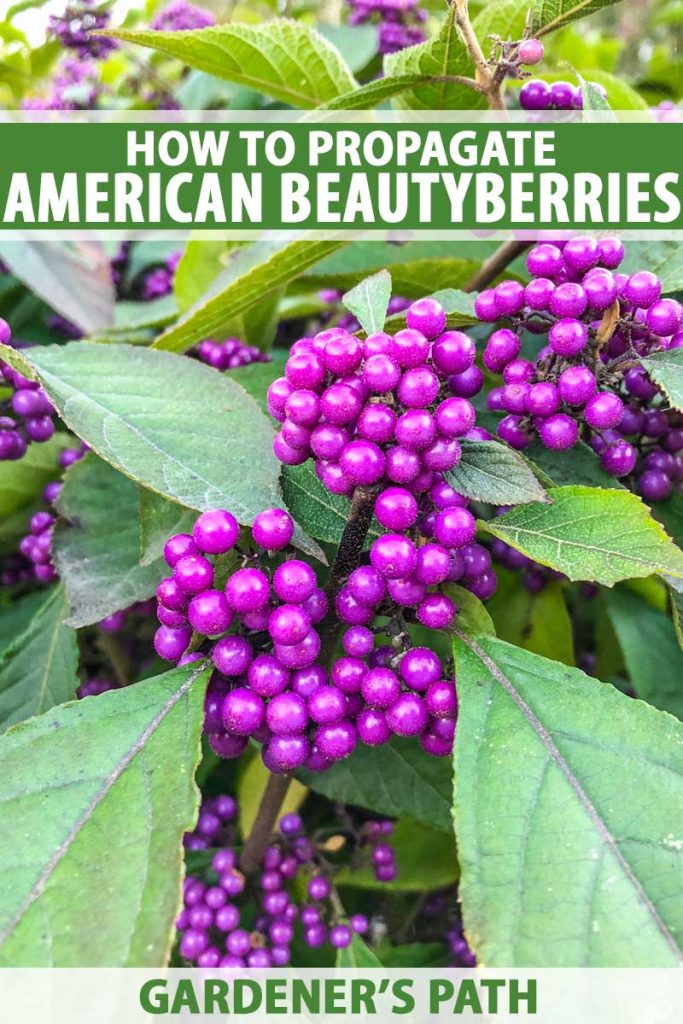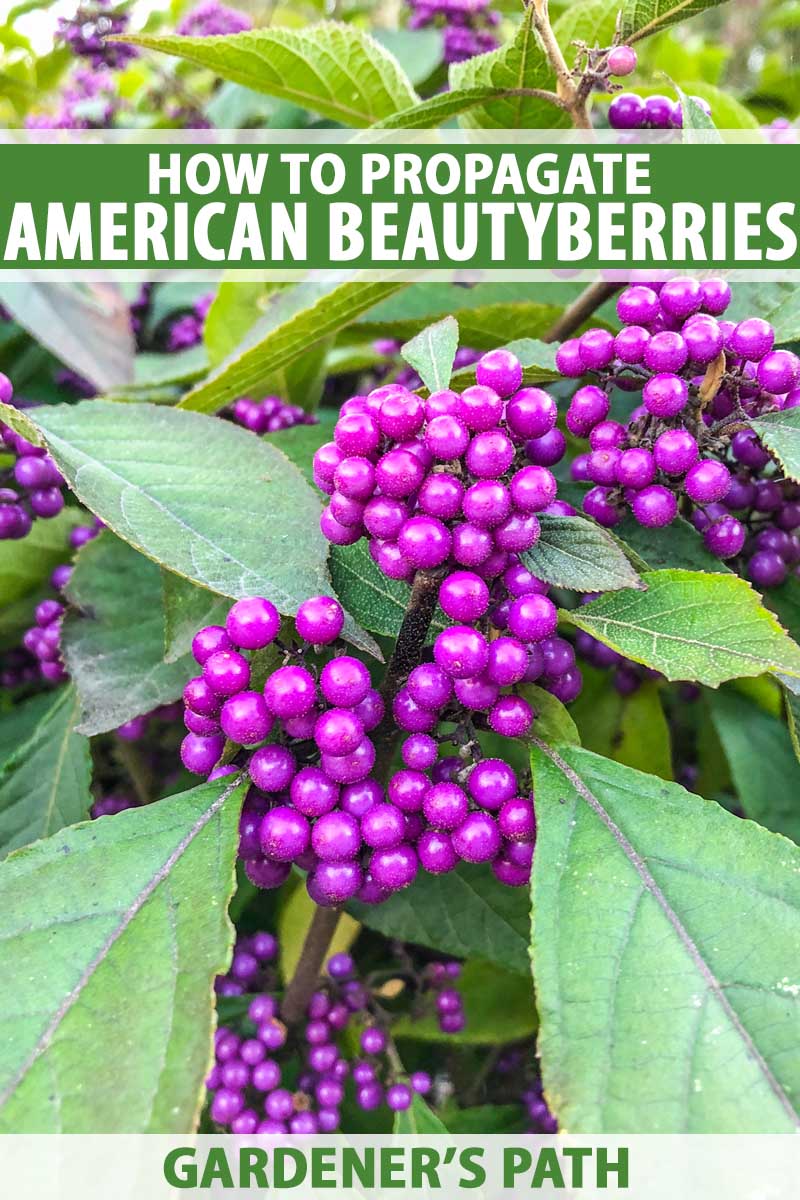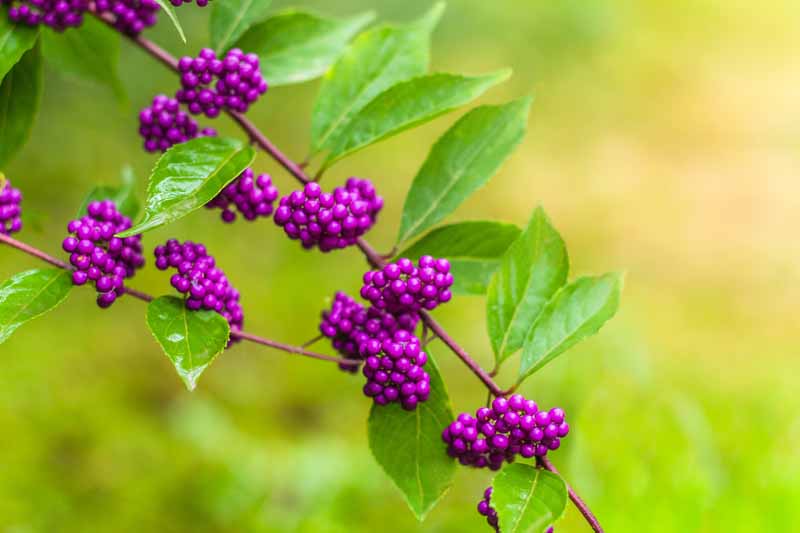Gardeners love beautyberry’s large leaves, which are light green and slightly fuzzy. Its gracefully arching branches are also appealing. But, really, it’s the plant’s late-summer or early-fall clusters of small, bright purple fruit that draws the eye and has gardeners wanting more. We link to vendors to help you find relevant products. If you buy from one of our links, we may earn a commission.
Propagation from Seed
You may be able to find American beautyberry seeds at local garden centers or you can order them online.
If you have a plant (or if your neighbor has a plant), you can hand-pick the mature fruit in the fall to source seeds. The berries contain two to four seeds each. Prepare the seeds in a blender. Yup. Mix the berries with at least five times as much water and pour into a blender. Using short bursts, run the blender at its lowest speed. This will separate the seeds from the berry tissue. The mature seeds will sink to the bottom while immature seeds and other unnecessary bits will rise to the top. Strain out the stuff you don’t need and repeat the process a couple more times. Drain the seeds and spread out to dry. Store in a cool, dry place. When you’re ready to plant, place the seeds in cool, clear water and soak for 24 hours. Sow the seeds 1/16 of an inch deep in seedling trays or small pots filled with seed-starter potting mix. Find a warm, sunny place, and put your trays there. Lightly moisten the soil with a spray-bottle mister until the seedlings are ready to transplant, typically about three months after sowing.
Propagation from Cuttings
You can also propagate beautyberry from softwood cuttings. Softwood is a stem from the season’s new growth that is not quite brand new, but it is not old and woody, either. In late spring or early summer, choose a healthy plant (or more) that has plenty of stems and won’t miss one or two. Using a sharp, clean knife, cut four- to six-inch stems at a 45-degree angle. Be sure to select pieces that have two or three sets of leaves. Fill small pots with a general soil mix and insert and remove a pencil to create a hole for the cutting. Remove the lower leaves from your cutting, dip the cleanly cut end into powdered rooting hormone, and place it in the hole. Gently press the soil against the stem. Providing a “greenhouse”-type effect will help your plants stay moist. Accomplish this by putting a clear plastic bag or dome over the pots. Put your greenhouse in bright but indirect light. Your cuttings will take six to 10 weeks to grow to transplantable size. When you see evidence of healthy growth up top, you can assume you have good rooting in the soil.
Beauty for Everyone!
As you can see from the photos, you’d be doing yourself and your neighbors a favor if you were to propagate more beautyberry for all the world to see. Whether you choose to create more beauty from seeds or cuttings, it’s a fairly easy and quick path to more greenery, and one definitely worth taking.
For more information on growing this pretty shrub, be sure to check out our growing guide here. And why not check out some more of our guides to growing ornamental shrubs? Try these next:
How to Grow and Care for Forsythia How to Grow Texas Mountain Laurel How to Grow Hydrangeas for Big Blossomed Beauty
© Ask the Experts, LLC. ALL RIGHTS RESERVED. See our TOS for more details. Uncredited photos: Shutterstock.



